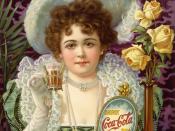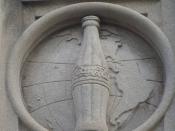Coca-Cola Premixed Rum BeverageMarketing PlanContentsSubjectSectionOrganizational overview1.0Mission statement 1.1Geographic location1.2Product mix 1.3New Product Description2.0SWOTT analysis3.0Strengths 3.1Weaknesses 3.2Opportunities 3.3Threats 3.4Marketing research4.0Segmentation Criteria 5.0Target Markets Selected5.1Product Differentiation and Positioning Strategy 6.0Product Life Cycle 7.0Stages of PLC for New Product7.1Marketing Mix8.0Product Identification8.1Pricing Objective9.0Suggested Retail Price9.1Profit Margin9.2Price and Quality Relationship9.3Place - Distribution Channels10.0Product Location Availability10.1Physical Distribution10.2Promotion11Personal Selling11.1Advertising11.2Sales Promotion11.3Public Relations11.4Website11.5Promotional Objectives12Promotional Budget12.1Control/Monitor13Evaluation Process13.1Reference14.01.0Organizational OverviewThe Coca-Cola Company was incorporated in 1919 and "succeeded to the business of a Georgia corporation with the same name that had been organized in 1892" (CNNMoney, 2007). Coca-Cola is currently in the nonalcoholic beverage business and is best known for their carbonated soft drinks. Coca Cola's finished beverage products are currently sold in over 200 countries; they sell beverage concentrates, syrups, and beverage bases to a variety of wholesalers, retailers, distributors, and bottling and canning operations. Coca Cola "also manufactures and sells some finished beverages, both carbonated and noncarbonated, including certain juice and juice-drink products; sports drinks; ready-to-drink coffees and teas; and water products" (CNNMoney, 2007).
The company is the marketer of four of the top five soft drink brands in the world and there are more than 1.4 billion servings of Coca-Cola products consumed worldwide every day. Coca-Cola places high regard on their consumers and strive to make "a positive contribution to the marketplace, the environment and communities" (Coca Cola, 2006). Coca-Cola was also ranked as the number one best global brand in 2006 by Interbrand, who states, "The purpose of these valuations is to demonstrate to the business community that brands are very important business assets and, in many cases, the single most valuable company asset" (Interbrand, 2007).
Coca-Cola had a very good year in 2006 and continues to see growth in the first half of 2007. "Net revenues for the quarter increased 9 percent, reflecting a 1 percent decrease...


